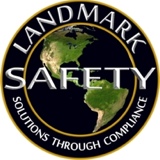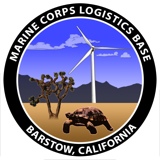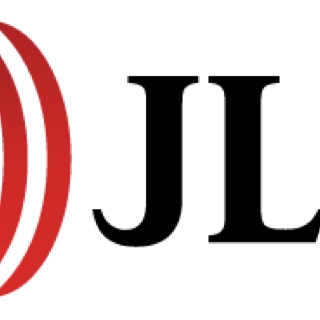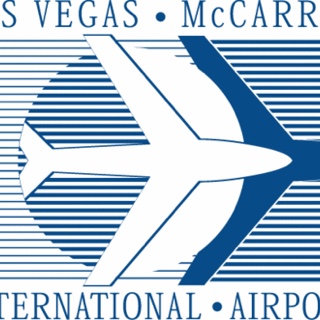Information
-
Document No.
-
Audit Title
-
Client / Site
-
Conducted on
-
Prepared by
-
Location
-
Personnel
1.0 - Last Quarter Inspection
-
1.1 - Was the last inspection reviewed by facility management?
-
1.2 - Were corrective actions taken on all previous findings?
2.0 - Building Safety
-
2.1 - Floor surfaces even and uncluttered? OSHA 1910.22(a)(2)
-
2.2 - Entry and walkways kept clear? OSHA 1910.22(a)(2)
-
2.3 - Walkways adequately and clearly marked? OSHA 1910.22(b)(2)
-
2.4 - Stairs and risers kept clear? OSHA 1910.22(b)(1)
-
2.5 - Are there any unattended liquid spills? OSHA 1910.22(a)(2)
-
2.6 - Are railings in good condition? OSHA 1910.23(d)(1)
-
2.7 - Are fall preventive measures in place and used where gaps occur in railings? OSHA 1910.23(e)(4)
-
2.8 - Are outdoor sidewalks/footpaths in good condition? OSHA 1910.22(b)(1)
3.0 - Chemical Safety
-
3.1 - Are all containers labelled correctly? OSHA 1910.1200(b)(4)(i)
-
3.2 - Are MSDS available for all chemicals? OSHA 1910.1200(b)(4)(ii)
-
3.3 - Are unused substances disposed of? OSHA 1910.106
-
3.4 - Are flammable cabinets available for storage of materials? OSHA 1910.106(d)(5)
-
3.5 - If applicable, are special storage conditions followed? OSHA 1910.106(d)(5)
-
3.6 - Are workers trained in the use of hazardous substances? OSHA 1910.1200
-
3.7 - If required, is PPE available? OSHA 1910.132
-
3.8 - Is adequate ventilation provided? OSHA 1910.106
-
3.9 - Are eye washes and showers easily accessible? OSHA 1910.151(c)
-
3.10 - Are all chemical containers closed or sealed when not in use? OSHA 1910.106
4.0 - Electrical
-
4.1 - Are all plugs, sockets and switches operable? OSHA 1910.305
-
4.2 - Are there no electrical flex cord sets (extension cords) lying across walkways? OSHA 1910.334(a)
-
4.3 - Are there no frayed or damaged flex cord sets? (extension cords) OSHA 1926.416(e)(1)
-
4.4 - Where required, are emergency shut-down procedures in place? OSHA 1910.335
-
4.5 - Is there 36" of working space on all sides of electrical panels, switchboards, motor control centers and circuit breaker panels? OSHA 1910.303(iv)
-
4.6 - Do all power supply circuits and circuit breaker panels have a distinct configuration? OSHA 1910.306(h)(4)(iii)(A)
-
4.7 - Do all power supply circuits and circuit breaker panels have distinct markings? OSHA 1910.306(h)(4)(iii)(B)
-
4.8 - Are safety signs and tags used to warn employees about electrical hazards? OSHA 1910.145
-
4.9 - Is a Lock-out/Tag-out system in place and used? OSHA 1910.147
5.0 - Fire Protection / Emergency Plan
-
5.1 - Is the emergency evacuation plan displayed and understood by all employees? OSHA 1910.38
-
5.2 - Are evacuation procedures discussed regularly? (3 to 4 times a year) OSHA 1910.38(e)
-
5.3 - Are portable fire extinguishers in place and clearly marked? OSHA 1910.157(c)(1)
-
5.4 - Are portable fire extinguishers recently serviced? (check monthly punch tag) OSHA 1910.157(e)(1)
-
5.5 - Are portable fire extinguishers clear of obstructions? (36" clearance) OSHA 1910.157(c)(1)
-
5.6 - Are portable fire extinguisher indicator signs at least 6' above floor level? OSHA 1910.157(c)(1)
-
5.7 - Do exit doors easily open from inside? OSHA 1910.36(c)(1)
-
5.8 - Are exits clear of obstructions? OSHA 1910.36(g)(4)
-
5.9 - Is fire alarm system functioning correctly? OSHA 1910.164(c)(1)j
-
5.11 - Are combustible materials stored out from under any stairwell? OSHA 1910.106(d)(5)(i)
6.0 - First Aid
-
6.1 - Are first aid and eye wash cabinets identified, serviceable and accessible? OSHA 1910.151
-
6.2 - Are cabinets and contents clean and orderly? OSHA 1910.151
-
6.3 - Are contents regularly checked? OSHA 1910.151
-
6.4 - Are all contents within their expiration date? OSHA 1910.151
-
6.5 - Are mechanical eye wash stations identified, serviceable and accessible? OSHA 1910.151(c)
-
6.6 - Are mechanical eye wash stations tested frequently? OSHA 1910.151(c)
-
6.7 - Are AEDs in use? If so, are they identified, serviceable and accessible? OSHA 1910.151
-
6.8 - Is there clear access to all first aid cabinets, stations and equipment? OSHA 1910.151
-
6.9 - Are all employees aware of locations of first aid equipment? OSHA 1910.151
-
6.10 - Are there employees on site that are trained in first aid response and CPR? OSHA 1910.151(b)
7.0 - Garbage Removal
-
7.1 - Trash cans located at suitable points around facility? OSHA 1910.141(a)(4)
-
7.2 - Trash cans emptied regularly? OSHA 1910.141(a)(4)
-
7.3 - Oily rags and combustible refuse in covered metal containers? OSHA 1910.141(a)(4)
8.0 - General Lighting
-
8.1 - Good natural lighting? OSHA 1926.56(a)
-
8.2 - Light fixtures clean and in good condition? OSHA 1926.56(a)
-
8.3 - Emergency exit lights operable? OSHA 1910.37(b)
-
8.4 - Are exterior lights operational? OSHA 1926.56(a)
9.0 - Ladders
-
9.1 - Are all ladders industrial strength? (non-household rated) OSHA 1926.1053
-
9.2 - Are ladders in good condition? OSHA 1926.1053(b)(16)
-
9.3 - If used for electrical work, are they non conductive? (wood or fiberglass) OSHA 1926.1053
-
9.4 - Are they used according to instructions? OSHA 1926.1053
-
9.5 - For extension ladders, are ropes, pulleys and treads in good working condition? OSHA 1926.1053
10.0 - Lifting Equipment
-
10.1 - Are all mesh and metal slings in good working condition? (no tears, cuts, fraying, weak points) OSHA 1910.184(d)
-
10.2 - Do all mesh and metal slings have current inspection tags? OSHA 1910.184(d)
-
10.3 - Are all mechanical lifting devices in good working condition? (dolly, hand truck, forklift, etc.) OSHA 1910.187
11.0 - Machines
-
11.1 - Are they kept clean? OSHA 1910.212
-
11.2 - Are the floors around the machines kept clean? OSHA 1910.22(a)(2)
-
11.3 - Guards in good condition? OSHA 1910.217(c)(2)
-
11.4 - Starting and stopping devices within easy reach of the operator? OSHA 1910.212
-
11.5 - Waste/off cuts removed and stored safely? OSHA 1910.212
-
11.6 - Drip pans on floor to prevent spillage? OSHA 1910.22(a)(2)
-
11.7 - Adequate work space?
-
11.8 - Is lighting adequate? OSHA 1926.56(a)
-
11.9 - Noise levels controlled? OSHA 1910.95(b)(1)
12.0 - Office Hazards
-
12.1 - Are filing cabinets in good working condition, not overloaded and are drawers closed while unoccupied?
-
12.2 - Condition of office furniture? (damage)
-
12.3 - Are air conditioning systems maintained regularly?
-
12.4 - Are non-slip floor coverings (rugs, mats) stable and in good condition? OSHA 1910.22(a)(2)
-
12.5 - Are office machine cords kept off the floor to prevent tripping?
13.0 - Shop / Work Area
-
13.1 - Clear of trash? OSHA 1910.22(a)(2)
-
13.2 - Tools not in use kept in specified storage area/box? OSHA 1910.242
-
13.3 - Are there any damaged hand tools in use? OSHA 1910.242
-
13.4 - Are there any damaged power tools in use? OSHA 1910.242
-
13.5 - Are bench and pedestal grinders securely mounted to avoid migrating or tipping?
-
13.6 - Is appropriate PPE in place and available on applicable equipment? OSHA 1910.132
-
13.7 - Is housekeeping up to standards? OSHA 1910.22(a)(1)
14.0 - Storage Design and Use
-
14.1 - Materials stored on shelves, racks and in bins wherever possible? OSHA 1926.250
-
14.2 - Storage designed to minimize lifting injuries/problems? OSHA 1926.250
-
14.3 - Floors around racking clear of trash? OSHA 1910.141
-
14.4 - Are racks and pallets in good working condition? OSHA 1926.250
-
14.5 - Is the load limit for overhead storage, marked? OSHA 1910.22(d)(1)
-
14.6 - Is a vertical barrier (toe board) utilized in overhead storage areas? (where required) OSHA 1910.21(a)(9)
-
14.7 - Are refrigerators clearly marked "FOOD ITEMS ONLY" or "NOT FOR FOOD STORAGE", where applicable? OSHA 1910.141
15.0 - Welding
-
15.1 - Are cylinders chained or strapped and clear of frequent traffic? OSHA 1910.253(b)(2)
-
15.2 - Are cylinders stored away from heat sources? OSHA 1910.253(b)(2)
-
15.3 - Is oxygen stored separately from any other gas cylinders? (20ft away or 5ft high 30 minute fire wall) OSHA 1910.253(b)(4)(iii)
-
15.4 - Are cylinders stored with regulators removed and valve caps screwed hand tight when not in use? OSHA 1910.253
-
15.5 - Is the appropriate PPE available and in use on welding and cutting jobs? OSHA 1910.252(b)(2)
-
15.6 - Do portable tinted screens or curtains surround welding and cutting areas? OSHA 1910.252(c)(1)(ii)
-
15.7 - Are flammables removed from welding / cutting area? OSHA 1910.252(a)(1)(i)
Sign Off
-
Auditor's Signature










